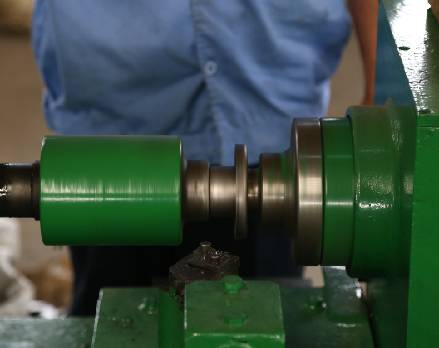 Afrikaans
Afrikaans  Albanian
Albanian  Amharic
Amharic  Arabic
Arabic  Armenian
Armenian  Azerbaijani
Azerbaijani  Basque
Basque  Belarusian
Belarusian  Bengali
Bengali  Bosnian
Bosnian  Bulgarian
Bulgarian  Catalan
Catalan  Cebuano
Cebuano  Corsican
Corsican  Croatian
Croatian  Czech
Czech  Danish
Danish  Dutch
Dutch  English
English  Esperanto
Esperanto  Estonian
Estonian  Finnish
Finnish  French
French  Frisian
Frisian  Galician
Galician  Georgian
Georgian  German
German  Greek
Greek  Gujarati
Gujarati  Haitian Creole
Haitian Creole  hausa
hausa  hawaiian
hawaiian  Hebrew
Hebrew  Hindi
Hindi  Miao
Miao  Hungarian
Hungarian  Icelandic
Icelandic  igbo
igbo  Indonesian
Indonesian  irish
irish  Italian
Italian  Japanese
Japanese  Javanese
Javanese  Kannada
Kannada  kazakh
kazakh  Khmer
Khmer  Rwandese
Rwandese  Korean
Korean  Kurdish
Kurdish  Kyrgyz
Kyrgyz  Lao
Lao  Latin
Latin  Latvian
Latvian  Lithuanian
Lithuanian  Luxembourgish
Luxembourgish  Macedonian
Macedonian  Malgashi
Malgashi  Malay
Malay  Malayalam
Malayalam  Maltese
Maltese  Maori
Maori  Marathi
Marathi  Mongolian
Mongolian  Myanmar
Myanmar  Nepali
Nepali  Norwegian
Norwegian  Norwegian
Norwegian  Occitan
Occitan  Pashto
Pashto  Persian
Persian  Polish
Polish  Portuguese
Portuguese  Punjabi
Punjabi  Romanian
Romanian  Russian
Russian  Samoan
Samoan  Scottish Gaelic
Scottish Gaelic  Serbian
Serbian  Sesotho
Sesotho  Shona
Shona  Sindhi
Sindhi  Sinhala
Sinhala  Slovak
Slovak  Slovenian
Slovenian  Somali
Somali  Spanish
Spanish  Sundanese
Sundanese  Swahili
Swahili  Swedish
Swedish  Tagalog
Tagalog  Tajik
Tajik  Tamil
Tamil  Tatar
Tatar  Telugu
Telugu  Thai
Thai  Turkish
Turkish  Turkmen
Turkmen  Ukrainian
Ukrainian  Urdu
Urdu  Uighur
Uighur  Uzbek
Uzbek  Vietnamese
Vietnamese  Welsh
Welsh  Bantu
Bantu  Yiddish
Yiddish  Yoruba
Yoruba  Zulu
Zulu Feb . 19, 2025 11:48
Back to list
Ceramic Rubber Pulley(Ceramic Lagging Rubber Pulley)
The innovative strides in conveyor technologies have propelled a range of specialized components to the forefront of the industry, none more crucial than the ceramic lagging on conveyor pulleys. This specialized component offers an unparalleled edge in enhancing conveyor system performance, efficiency, and durability, serving as an indispensable asset in material handling operations worldwide.
Furthermore, the intelligent design of ceramic lagging prevents material buildup, improving ease of cleaning and maintenance. This characteristic is particularly beneficial in industries where conveyor systems are subjected to rigorous cleaning protocols to comply with stringent hygiene standards. By mitigating material adhesion, ceramic lagging ensures that conveyor systems remain hygienic and operable, thus maintaining the integrity of the production process. From a sustainability perspective, the longevity and durability of ceramic lagging support eco-friendly operations. The material composition reduces the frequency of replacements, minimizing waste, and fostering sustainable practices. Companies committed to environmental responsibility can leverage this aspect to align with sustainability goals, reducing their ecological footprint while maintaining efficient operational standards. As conveyor systems continue to evolve, ceramic lagging on conveyor pulleys remains pivotal in setting benchmarks for performance and reliability. The implementation of this technology not only signifies a commitment to operational excellence but also highlights an adherence to quality standards that drive industry success. Whether adapting to rigorous mining conditions or facilitating the gentle transport of delicate materials, ceramic lagging has cemented its position as an essential component in the realm of conveyor technologies. Given its unparalleled attributes, ceramic lagging continues to play an instrumental role in revolutionizing conveyor systems. Its ability to enhance performance while reducing operational disruptions makes it an invaluable resource across various industries. As more businesses recognize the advantages of ceramic lagging, its integration into conveyor systems stands as testimony to the quest for greater efficiency, sustainability, and innovation in material handling solutions.


Furthermore, the intelligent design of ceramic lagging prevents material buildup, improving ease of cleaning and maintenance. This characteristic is particularly beneficial in industries where conveyor systems are subjected to rigorous cleaning protocols to comply with stringent hygiene standards. By mitigating material adhesion, ceramic lagging ensures that conveyor systems remain hygienic and operable, thus maintaining the integrity of the production process. From a sustainability perspective, the longevity and durability of ceramic lagging support eco-friendly operations. The material composition reduces the frequency of replacements, minimizing waste, and fostering sustainable practices. Companies committed to environmental responsibility can leverage this aspect to align with sustainability goals, reducing their ecological footprint while maintaining efficient operational standards. As conveyor systems continue to evolve, ceramic lagging on conveyor pulleys remains pivotal in setting benchmarks for performance and reliability. The implementation of this technology not only signifies a commitment to operational excellence but also highlights an adherence to quality standards that drive industry success. Whether adapting to rigorous mining conditions or facilitating the gentle transport of delicate materials, ceramic lagging has cemented its position as an essential component in the realm of conveyor technologies. Given its unparalleled attributes, ceramic lagging continues to play an instrumental role in revolutionizing conveyor systems. Its ability to enhance performance while reducing operational disruptions makes it an invaluable resource across various industries. As more businesses recognize the advantages of ceramic lagging, its integration into conveyor systems stands as testimony to the quest for greater efficiency, sustainability, and innovation in material handling solutions.
Latest news
-
Revolutionizing Conveyor Reliability with Advanced Rubber Lagging PulleysNewsJul.22,2025
-
Powering Precision and Durability with Expert Manufacturers of Conveyor ComponentsNewsJul.22,2025
-
Optimizing Conveyor Systems with Advanced Conveyor AccessoriesNewsJul.22,2025
-
Maximize Conveyor Efficiency with Quality Conveyor Idler PulleysNewsJul.22,2025
-
Future-Proof Your Conveyor System with High-Performance Polyurethane RollerNewsJul.22,2025
-
Driving Efficiency Forward with Quality Idlers and RollersNewsJul.22,2025
OUR PRODUCTS





























